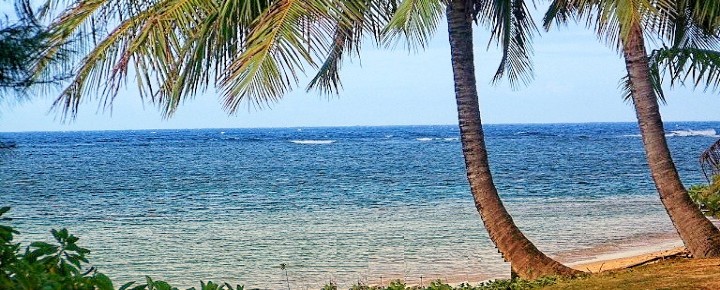#scuba This Spot Where Visitors Keep Dying In Hawaii – Beat of Hawaii
[ad_1] Another recent death over the holidays brings home the fact far too many Hawaii visitors turn up dead on our beaches. The most recent case is a California Bay Area resident who disappeared while swimming off Anini Beach on Christmas Day here on Kauai. It wasn’t long ago that another California visitor turned up
[ad_1]

Another recent death over the holidays brings home the fact far too many Hawaii visitors turn up dead on our beaches. The most recent case is a California Bay Area resident who disappeared while swimming off Anini Beach on Christmas Day here on Kauai. It wasn’t long ago that another California visitor turned up dead at the very same beach.
Anini has no lifeguard and is reef protected but not always calm. There can be strong currents, and if you are on the north end, there is a channel through the reef. The safest place is the south end, which is typically calm.
The 56-year-old Gilroy resident Prakash Shroff disappeared while swimming and was never located despite rescue attempts by boat and in the air. Prakash was swimming with his family, who accompanied him to Kauai. They were some distance offshore. The Kauai Fire Department release said that “they became distressed.” While the rest of his family could return to shore, Schroff was never found.
The Kauai Police Department said, “Our hearts go out to Prakash’s family and friends during this difficult time. We appreciate all agencies and everyone involved in our attempt to locate Prakash.”
Here on Kauai, this is one of a spate of 12 deaths by drowning, which is the primary cause of visitor fatalities in Hawaii. It is all too frequent that we learn of visitor deaths in the ocean here. Both that and our own experiences keep ocean safety on our minds.
We recall an 81-year-old California man who also died at Anini Beach in September while snorkeling. James Pirkle Jr. was found unresponsive snorkeling nearly 300 feet from the shore.
A study snorkel safety study funded by the State of Hawaii found there may be a relationship between travel and snorkel drownings.
You’ll find information on which beaches are lifeguarded, current ocean conditions and warnings, where the most injuries occur, and other ocean safety data. The state Department of Health said the website’s goal is “Keeping everyone who goes to the ocean safe.”
If in doubt, don’t go out for real.
It is easy to think that you are comfortable in the ocean, but it is also more powerful than you think, and you can never assume it isn’t.
Top Ten Hawaii Beach Safety Tips.
Issues can include strong currents, wave surges, and seasonal variations in ocean conditions, among others. Be alert, do not turn your back on the ocean, and follow these suggestions for your Hawaii vacation:
1. Minimize risk by heightened awareness and respect for ocean conditions and dangers.
2. Swim at lifeguard-protected Hawaii beaches. Look for other beaches that have rescue station tubes.
3. Follow Hawaii beach warnings and closures.
4. Check with a lifeguard if in any doubt.
5. Observe the ocean conditions before going in. Look for variable conditions and larger-than-expected waves.
6. Review ocean safety brochures found in visitor accommodations.
7. Check ocean safety websites, including the new one and that of the Hawaii Lifeguard Association.
8. Learn about rip currents and how to deal with them.
9. Avoid jellyfish stings – read our updated Hawaii jellyfish update and calendar. (LINK)
10. Don’t traverse wet rocks, especially when waves can appear suddenly. Check for hidden underwater rocks found at many Hawaii beaches.
Can an accidental drowning happen to you?
Drownings can happen at any beach, regardless of your physical condition, age, or other factors. There were 84 drownings in the latest year studied.
There’s always a Hawaii beach accessible, no matter the time of year. But entering the water at the wrong beach at the wrong time of year is a recipe for trouble. Surf conditions change rapidly and both daily and seasonally. It can even change in minutes.
Hawaii’s Deadliest Beaches.
Surprisingly, the deadliest beaches may not be those that first come to mind. Many drownings occur at some of the smoothest water beaches where visitors are snorkeling or swimming.
Hanauma Bay
Waikiki Beach
Black Rock
Kahanamoku Beach and Lagoon
Molokini
Most Dangerous Hawaii Beaches.
Some of the most dangerous beaches in terms of injury but not mortality include the following. If your beach isn’t listed, it doesn’t mean you shouldn’t be concerned:
Makena Beach – Maui
Hapuna Beach – Big Island
Sandy Beach – Oahu
Brennecke Beach (Poipu) – Kauai
Laaloa Beach – Big Island
Thank you for paying attention to ocean safety and sharing that with others!
Photo Credit: Anini Beach, Kauai, taken by Beat of Hawaii.
Disclosure: We receive a small commission on purchases from some of the links on Beat of Hawaii. These links cost you nothing and provide income necessary to offer our website to you. Mahalo! Privacy Policy and Disclosures.
Adblock test (Why?)
[ad_2]
Source link








Comments